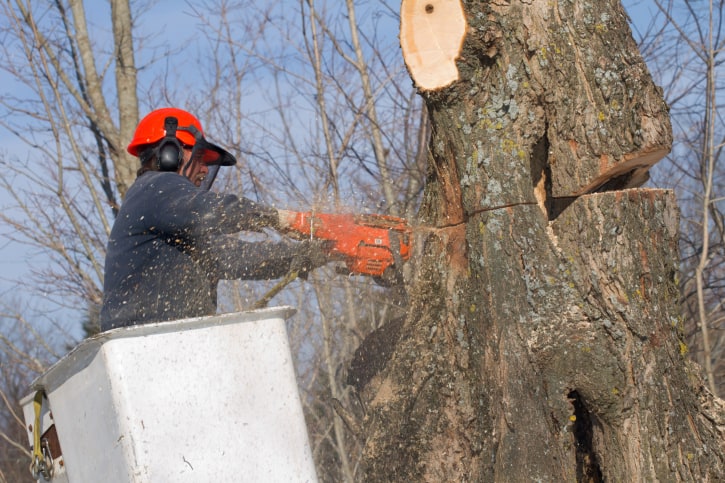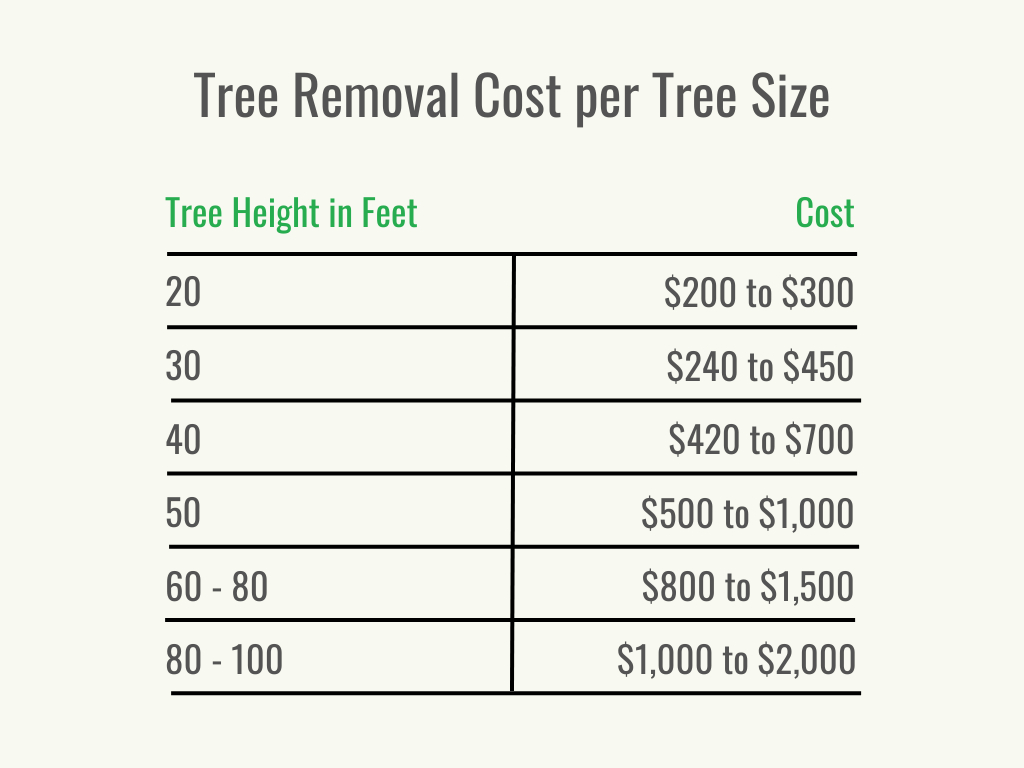Featured
Table of Contents
- – Leonia, NJ Tree Removal: Cost Variables
- – Leonia, NJ Stump Grinding Price Ranges
- – Leonia, NJ Arborist Package Prices
- – What Should An Tree Trimming Cost In Leonia, ...
- – Why Hire An Tree Service In Leonia, NJ?
- – Leonia, NJ Tree Removal Pricing Structure
- – Transparent Stump Grinding Costs In Leonia, NJ
- – Leonia, NJ Stump Grinding Cost Models
- – Commercial Tree Removal Pricing In Leonia, NJ
- – Smart Tree Clearing Costs In Leonia, NJ
- – Cost Comparison: Stump Removal In Leonia, NJ
- – Leonia, NJ Tree Cutting Comparison: Pricing
- – Leonia, NJ Tree Cutting Cost Structure
- – Leonia, NJ Arborist Cost Factors
- – Top Affordable Tree Cutting In Leonia, NJ

The subsections below supply more detailed information about pricing, including an average variety for each. TypeAverage Removal CostPineConiferPalmMagnoliaArborvitaeAshCedarSweet GumEucalyptusSycamoreCypressOakMaplePoplar You can expect to pay between to get rid of a pine, depending upon its size. Removing a pine is one of the more cost effective tasks unless it is one that has been around for many years and is quite big.
Leonia, NJ Tree Removal: Cost Variables
Pines also have a tap root that grows deep into the soil, which can show to be harder to get rid of. The process itself involves a specialist cutting the tree, clearing the base, cutting the surface area roots, removing the stump, and lastly treating the soil. Without an expert hand, you risk leaving pine seedlings behind, which will fall from the roots of distressed pines.
Leonia, NJ Stump Grinding Price Ranges
The U.S. national average for conifer elimination is roughly to have the conifer reduced, carried away, and the stump ground or gotten rid of completely. Conifers are usually easier to eliminate, and although they can grow rather high, they do not cost a fortune to get rid of. Conifers include pine, spruce, fir, and juniper trees.
Leonia, NJ Arborist Package Prices
While conifers are gorgeous, they kill native plants and particular kinds of grass. This is because they need a great deal of water and nutrients to make it through, so they leach it off surrounding plants. They likewise have an extensive network of roots, which can impact your home's foundation. The average rate of palm elimination depends on the height as much as the type, varying from.
What Should An Tree Trimming Cost In Leonia, NJ?
That is why it is necessary to know which type you are removing. While you do not need an herbicide to eliminate a palm tree, there are some actions your removal professional will need to take to make sure the job is done correctly. There are two methods they can get rid of them: by chopping them down or digging them up.
Why Hire An Tree Service In Leonia, NJ?
This is because small animals like rats and scorpions frequently live in them. Plus, lots of types will have spikes, too. From there, they eliminate the real tree and then the stump. Expect to pay between to eliminate this type of tree, depending upon the specific size and details of the job.
Leonia, NJ Tree Removal Pricing Structure
There are 3 types: green, white, and black ash. With its gray-tinged bark, its leaves are green or purple in the spring and golden yellow or purplish-red in the fall.
Transparent Stump Grinding Costs In Leonia, NJ

Due to the variation in height, the elimination price variance is broad from. A coniferous, evergreen tree, the cedar is a durable species.
Leonia, NJ Stump Grinding Cost Models
The development of incorrect cedars varies from 50 feet up to 230 feet high. With star-shaped leaves and sensational fall colors, the sweet gum is thought about a medium to big tree.
Commercial Tree Removal Pricing In Leonia, NJ
Usually, it costs in between to remove a eucalyptus. Eucalyptus are not typical everywhere, but they are rather big compared to others, which is why even the smaller sized ones are so expensive to eliminate.
Smart Tree Clearing Costs In Leonia, NJ
There are a handful of methods to do this, consisting of burning, pulling, grinding, or killing them with herbicide. Anticipate to pay between to remove sycamores, based upon the height, trunk size, and quantity of work included. Sycamores are one of the biggest wood trees, normally varying from 60 to 100 feet high and as broad as 15 feet.
Cost Comparison: Stump Removal In Leonia, NJ
The first two steps will expose the insides of the tree and cut off the circulation of nutrients up the trunk. From there, a professional applies herbicide to kill the tree and cuts down the trunk.
Leonia, NJ Tree Cutting Comparison: Pricing
There are several kinds of Cypress trees, however the most widespread are the Leyland, Arizona, Bald, and Italian. The Bald Cypress grows in swampy or extremely wet areas while the others delight in a dry, warm, or hot climate (tree removal). They can grow as high as 80 to 100 feet tall
Leonia, NJ Tree Cutting Cost Structure

Prone to diseases, the Cypress is one of the most valued woods for furnishings. The average oak grows to around 60 feet, and depending upon the intricacy of the elimination, it costs approximately to get rid of. The specific size of your oak and the effort required to fell it affect what you will really spend for removal along with any extra services like stump grinding.
Leonia, NJ Arborist Cost Factors
Access to the trees and the roots will likewise affect the overall expense. Maples can easily grow up to 100 feet or more and normally expense between to eliminate from your home. The final rate depends on the real height and complexity of the job. Maples are generally among the more costly trees to remove due to the fact that of their size and the work included in the removal.
Top Affordable Tree Cutting In Leonia, NJ
Growing as high as 90 to 115 feet, these enormous woods are generally found in North America and consist of the aspen, cottonwood, and balsam trees. The process to get rid of trees includes all the cutting and cutting of the branches and trunk, bringing it down to a stump.
Table of Contents
- – Leonia, NJ Tree Removal: Cost Variables
- – Leonia, NJ Stump Grinding Price Ranges
- – Leonia, NJ Arborist Package Prices
- – What Should An Tree Trimming Cost In Leonia, ...
- – Why Hire An Tree Service In Leonia, NJ?
- – Leonia, NJ Tree Removal Pricing Structure
- – Transparent Stump Grinding Costs In Leonia, NJ
- – Leonia, NJ Stump Grinding Cost Models
- – Commercial Tree Removal Pricing In Leonia, NJ
- – Smart Tree Clearing Costs In Leonia, NJ
- – Cost Comparison: Stump Removal In Leonia, NJ
- – Leonia, NJ Tree Cutting Comparison: Pricing
- – Leonia, NJ Tree Cutting Cost Structure
- – Leonia, NJ Arborist Cost Factors
- – Top Affordable Tree Cutting In Leonia, NJ
Latest Posts
Battery Replacement Costs For Stump Grinding In Forestville, MD
Veteran Discounts On Stump Grinding In Pierre, SD
Best Time To Hire An Tree Service In Chico, CA
More
Latest Posts
Battery Replacement Costs For Stump Grinding In Forestville, MD
Veteran Discounts On Stump Grinding In Pierre, SD
Best Time To Hire An Tree Service In Chico, CA